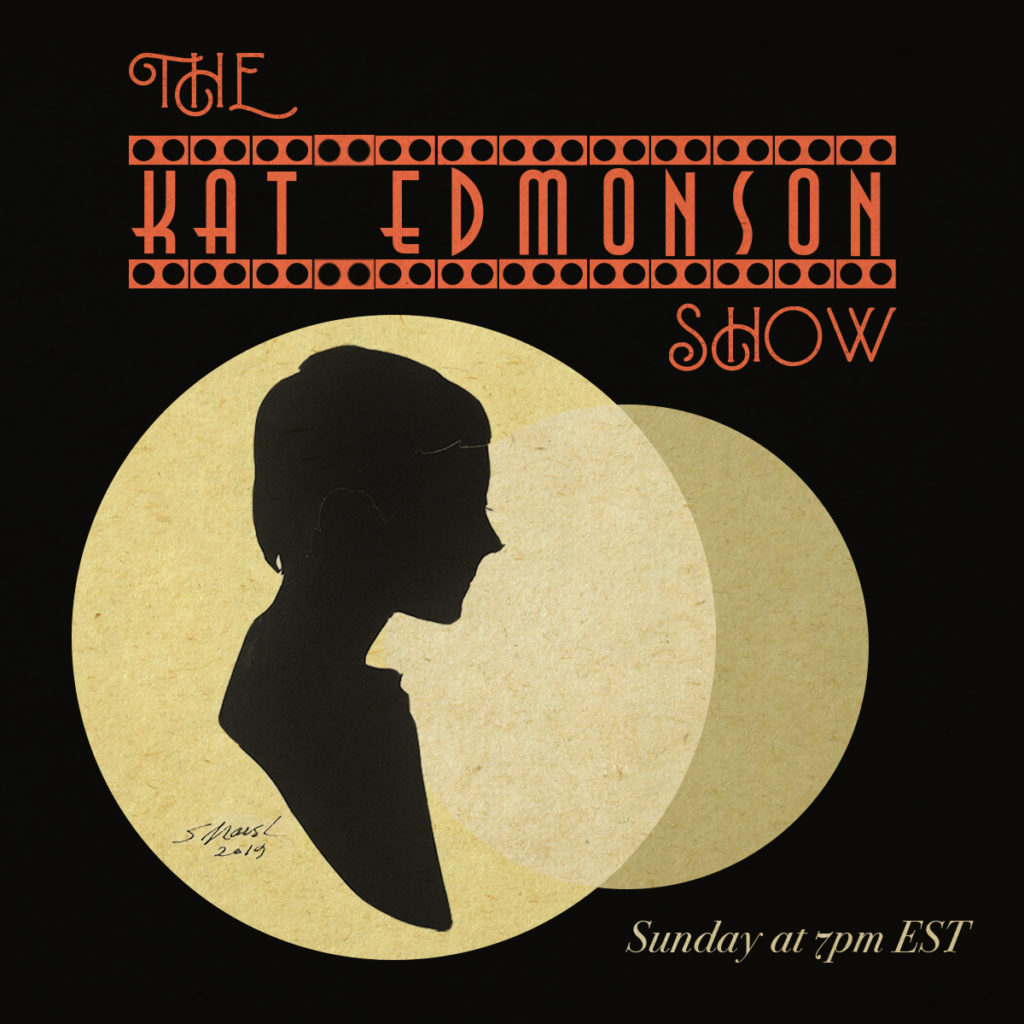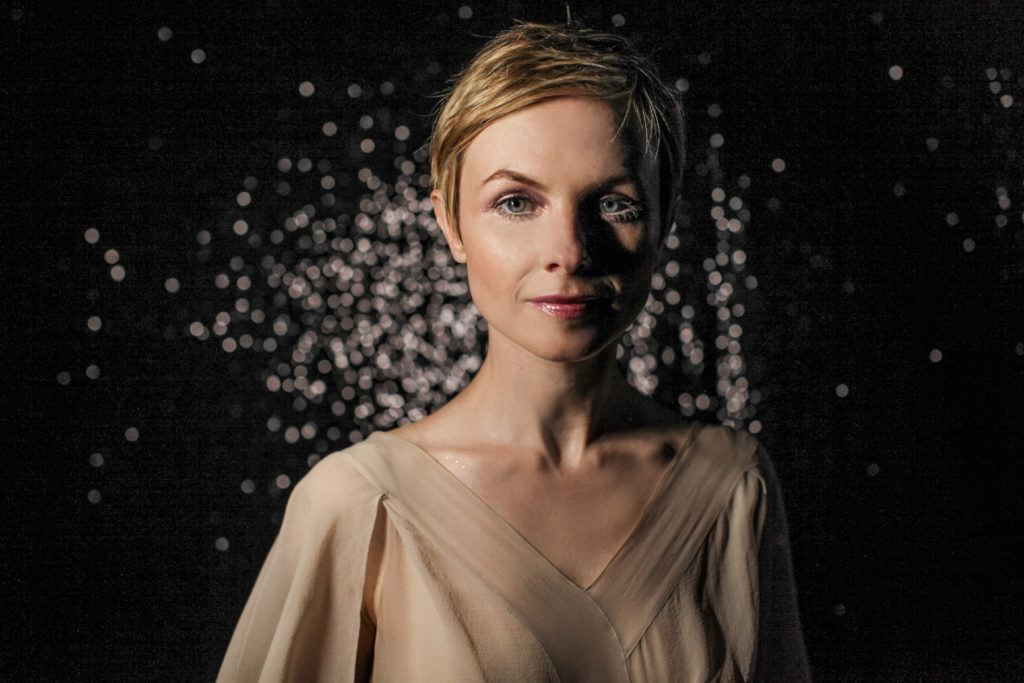
Prelude
Who nowadays can return to the Great American Songbook and the era of music movies from the first half of the 20th century, and write their own music in that style? Songs such as Lucky, Champagne, What Else Can I Do and Nobody Knows That. Or interpret the original vintage music with their very own expression – and even interpret other’s contemporary music in the vintage style? Like George Gershwin´s Summertime, Cole Porter’s Just One of Those Things, the Cardigan’s Lovefool, John Lennon’s (Just Like) Starting Over, the Cure’s Just Like Heaven or Miles Zuniga’s Hopelessly Blue.
I am of course referring to the unique American singer and songwriter Kat Edmonson.
Background
I got my first impression of Kat Edmonson through a YouTube video in 2014. By then she had been around as a singer and songwriter for more than ten years. At the end of 2002, aged 19, Kat auditioned for the TV show American Idol and she was chosen to be one of the show’s 48 contestants for the following year. In 2008 she recorded her first single. When I discovered Kat, she had also recorded and released two albums; Take to the Sky in 2009 and Way Down Low in 2012.
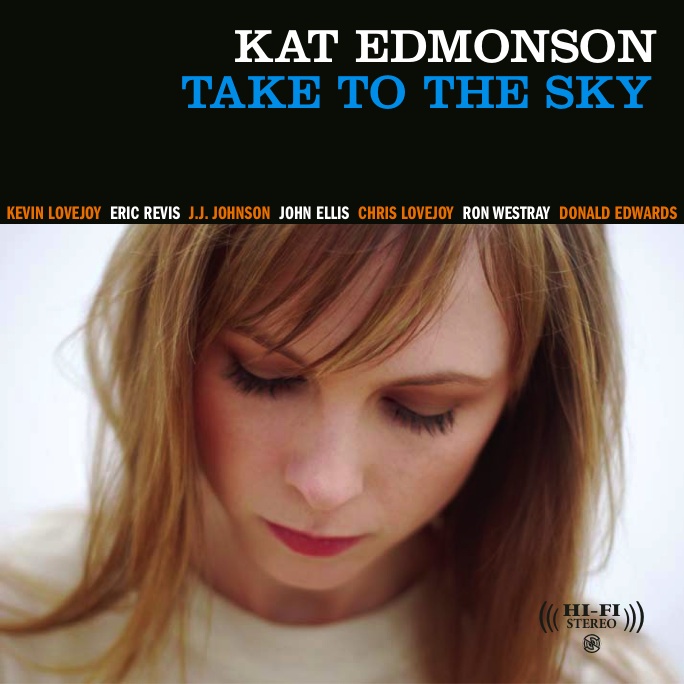
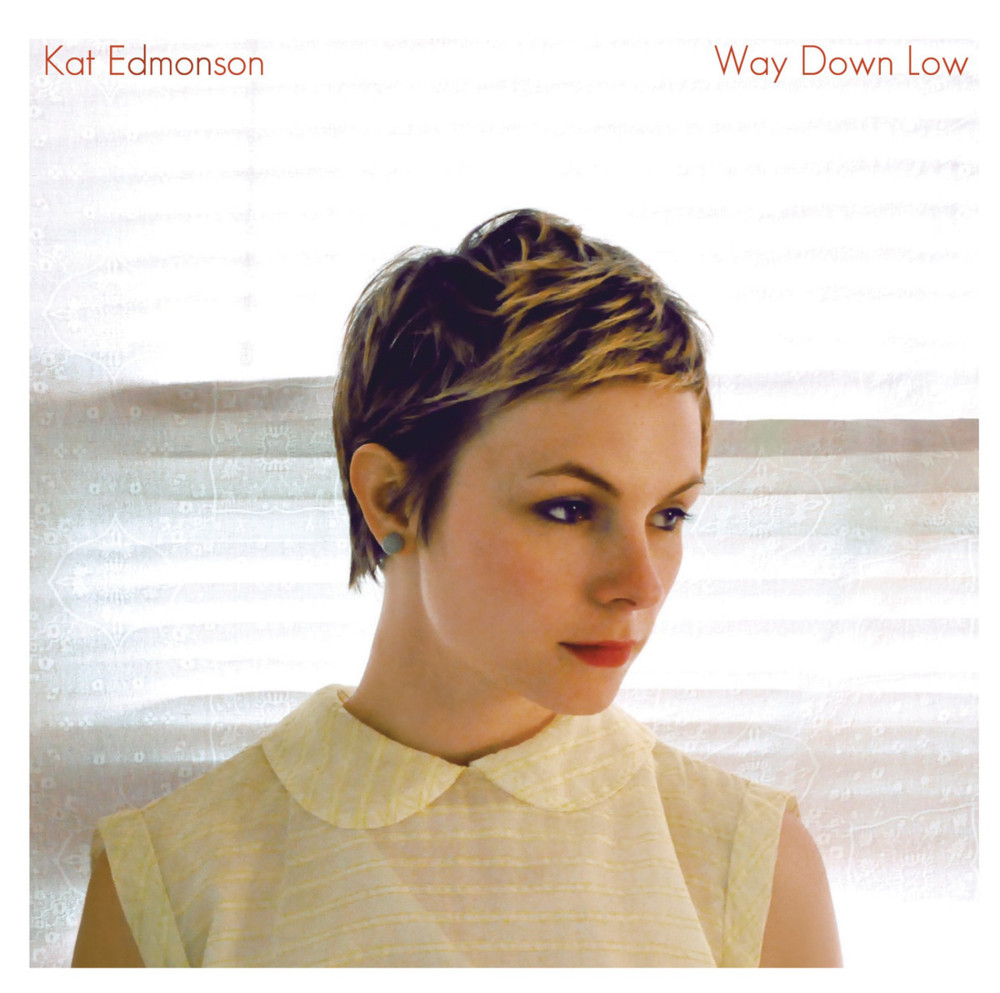
Kat Edmonson radiated genuineness and sincerity in that first video I saw. These qualities are important dimensions of music that appeals to me. So, I searched for more music by Kat and found more videos with the same qualities.

Later in 2014, I wrote a short article in Swedish about Kat and her music, published on my music site Musik.pm. However, I did not dig deep into Kat as a person in that article. I built the story only on information I could find on the Internet and on my own impressions of songs from the two first albums. In 2017, I published an updated article on Kat in English. The update merely added some notes on my impressions of her third album, The Big Picture.
Before writing those articles, I had learned that Kat’s mother taught her as a young child to like the songs of the Great American Songbook. That kind of music is a base for most of her work – own originals, interpretations of standards or interpretations of more modern popular music. Kat herself labels her music ‘Vintage Pop’. Some of it fits into the jazz field; some is closer to the American folk song tradition. Kat makes them all her own and turns them into ‘Vintage Pop’.
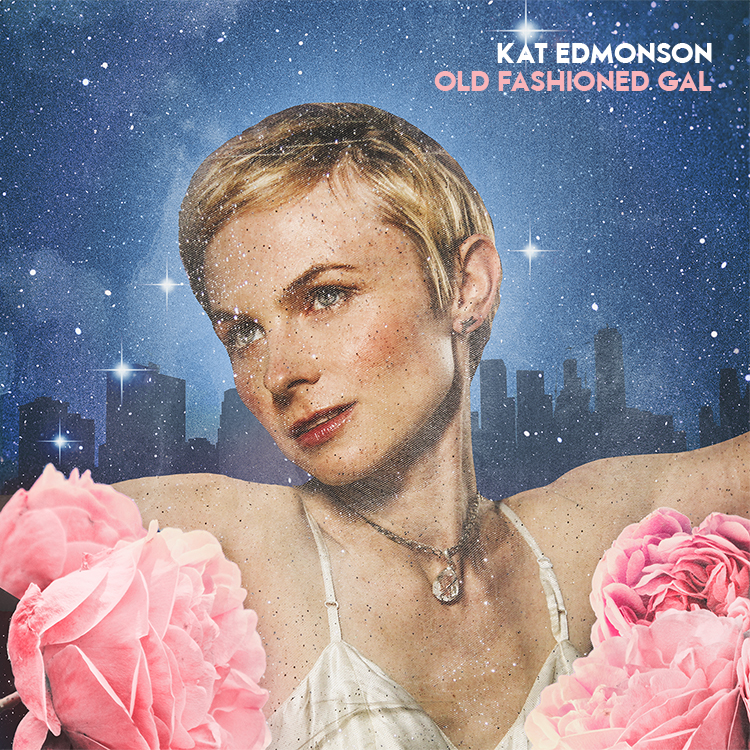
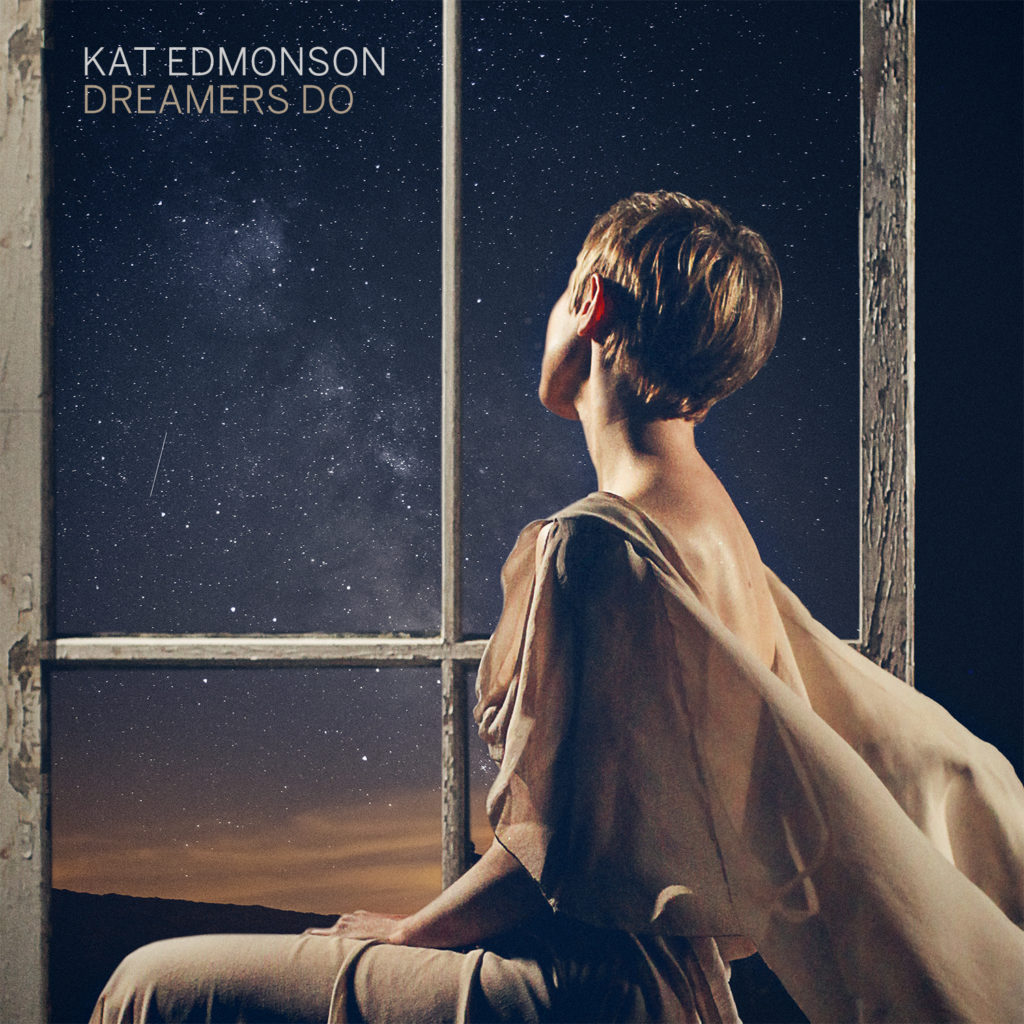
Since I wrote those two articles, Kat has released two more albums. Old Fashioned Gal has the feeling of old Hollywood, but the lyrics comment on the contemporary, busy society. Kat has written all the songs. Her latest album, Dreamers Do, takes place over the course of one, sleepless night. It comprises a mix of Kat’s original songs and re-imagined Disney songs from the mid-twentieth century.
You will find links to a sample of songs from Kat’s five albums at the end of this article.
I have from time to time returned to Kat’s music, and have come to realise that I want to know more about this brilliant and very special singer and songwriter. Therefore, I recently contacted Kat through her website and asked if I could interview her online. Kat quickly answered, and we decided on a time and date. This article builds on that interview, but also on episodes of the online show that Kat has broadcast during the Covid-19 pandemic – The Kat Edmonson Show.
The online Kat Edmonson Show
Kat started to make this show when she had to cancel most of a tour promoting her latest album. With a few exceptions, the show runs on a weekly basis. I highly recommend it. In the different episodes, Kat sings and talks to us about her life. She is open and communicates in a genuine way and with a natural sense of presence. The way she looks at us through the camera and our screens makes me feel like Kat and I are in the same room. I guess I am not the only viewer who has this feeling.
Some of the songs and some of the glimpses she gives of her life are responses to requests, questions and comments received from her viewers in advance. She also communicates online with viewers. It is not an easy task to be alone on ‘stage’ in the show for more than an hour, and to interfold communication with lots of individual fans in the show, and still make it interesting and entertaining. However, Kat does so in an excellent way.
In the show, Kat sings some of the songs a cappella and others with accompanying musicians. Due to the pandemic restrictions, the musicians are never physically present with Kat. Sometimes she sings accompanied by the instrumental tracks of her albums, sometimes she has accompaniment specially made for the show – on piano by Roy Dunlap and Matt Ray, on organ by Roy Dunlap and on guitar by Al Street and Bob Hart.
In those cases, Kat sends the specifications of the accompaniment needed and receives the recorded accompaniment in return. This is of course the only way to have accompaniment to songs that Kat has not recorded on albums herself.
And there are lots of them! With the reservation that she sometimes might need time to study and prepare songs, she has not declared any limitations on which songs she might sing in the show. She has sung “That’s Life” and “Can’t Help Falling in Love”, made famous by Frank Sinatra and Elvis Presley, in ways that start you thinking that she could one day record an interesting Sinatra album and an equally interesting Presley album. Kat has earlier recorded some brilliant and very special interpretations of well-known songs from different genres – so why not Sinatra and Presley?
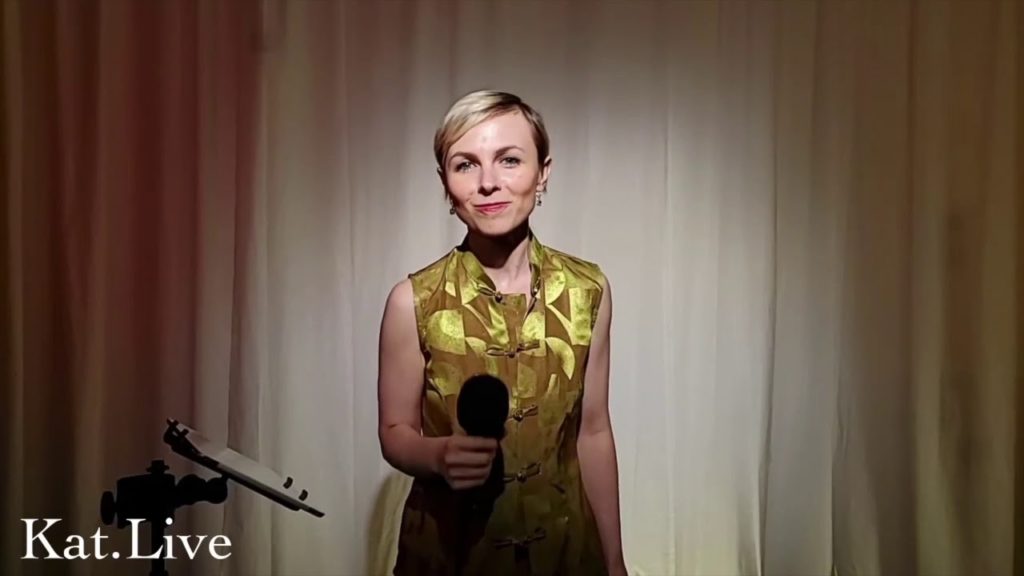
Altogether, the online Kat Edmonson Show is very rewarding to watch, although it is produced with very basic means. Kat and her partner Aaron Thurston produce and transmit the episodes by themselves, generally from their home. Aaron Thurston is a drummer and arranger, and he co-produced the albums Old Fashioned Gal and Dreamers Do with Kat. In the beginning, they made the episodes from their apartment in New York, where the scene of the show was a simple curtain arrangement in a room they used for their everyday life at other times. Now they have moved to a house upstate New York, where they can use one of their rooms just as their music and recording studio. This is a big advantage, but they also moved because of the pandemic situation in New York and for financial reasons. The pandemic restrictions are a heavy burden on all musicians’ financial situation.
The interview
In one episode, Kat declared that she wants to continue with the online Kat Edmonson Show, even when the pandemic restrictions are lifted. She enjoys doing the show, and you can tell that she does. I ask Kat if she really will have the time and inspiration to continue with the show when all the usual activities demand her attention again. Kat believes that she will – she usually has no problems with inspiration – and I hope that she is right. I think the format of this show suits Kat’s personality and her ability to be genuine and sincere very well.
Genuine, sincere and self-confident
Interviewing Kat, you apprehend the same personal qualities. She takes you and your questions seriously, and she thinks for a while before she starts to answer. Although most of the questions probably are not new to her, she still seriously considers how she can respond properly. Identifying her thoughts and emotions with care, and putting them into the right words, seem important to Kat. I think to myself that this might be a similar process to when Kat write songs – capturing thought and emotions, and putting them into relevant words and a melody.
When I ask Kat where her qualities of being genuine and sincere come from, she talks of her need of orientation – a need to be genuine because it gives her a reference point in life. If what she expresses does not feel authentic, she has no compass. To identify this orientation she operates with intuition that comes from her “heart”, an origin that maybe could be called “soul”, a kind of intuitive wisdom.
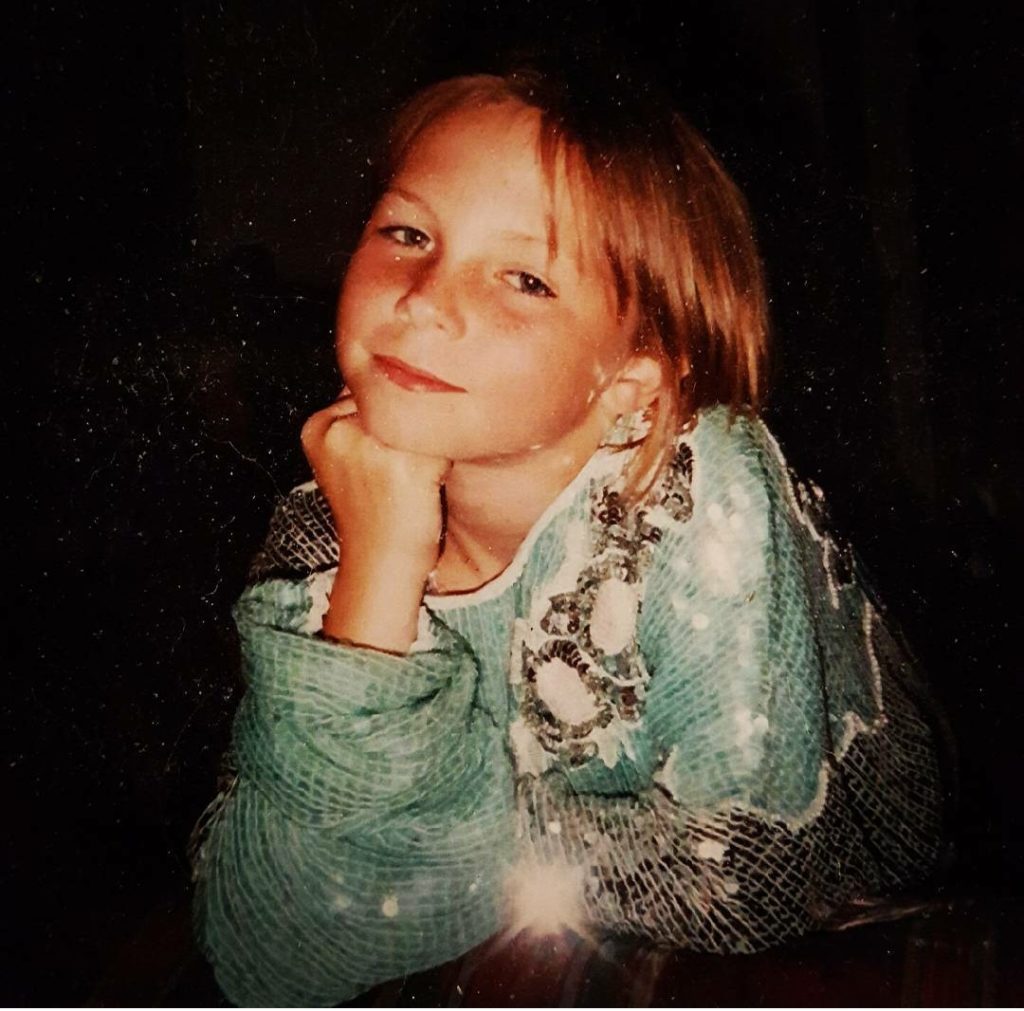
I suppose that a need for orientation might be part of the human constitution, but I am not sure that this means that everyone has, and follow, an intuition to be authentic. There are a lot of misleading orientation guides in society. Maybe Kat’s “upbringing by compassionate people”, as she characterises her childhood has, in her case, turned a common need for orientation in the direction of authenticity.
Most of her life Kat has had self-confidence. Compassionate care during childhood probably built the foundation of such confidence. She has been able to believe in herself from early age, and one of her first memories is writing a song.
Writing songs
As long as she can remember, Kat has had the ambition to write and sing songs, and – as she asserts as a fact – she had “the talent to back it up”. Not everyone can make such a claim in the natural and trustworthy way that Kat does – and of course, she is right. However, she claims that she could not teach song writing.
I have always been able to do it. If I were to instruct people I would only tell them to get in touch with their inner spirit.
The song ideas announce themselves to her, and she feels an irresistible need to make them into songs. Some of her inspiration comes from serious and sorrowful matters, some from more joyful life ingredients. There is even a song inspired only by the image of a sound. In episode 11 of her show, Kat tells the story of how the song Canoe came about. When I ask Kat if anything can inspire her, the straight answer is – “Yes, anything can inspire me”. Moreover, inspiration can ‘attack’ wherever and whenever. Kat tells us the story of when she purposely drove her car into unfamiliar surroundings in order to get lost. She needed the time to find her way home again to finish a song!
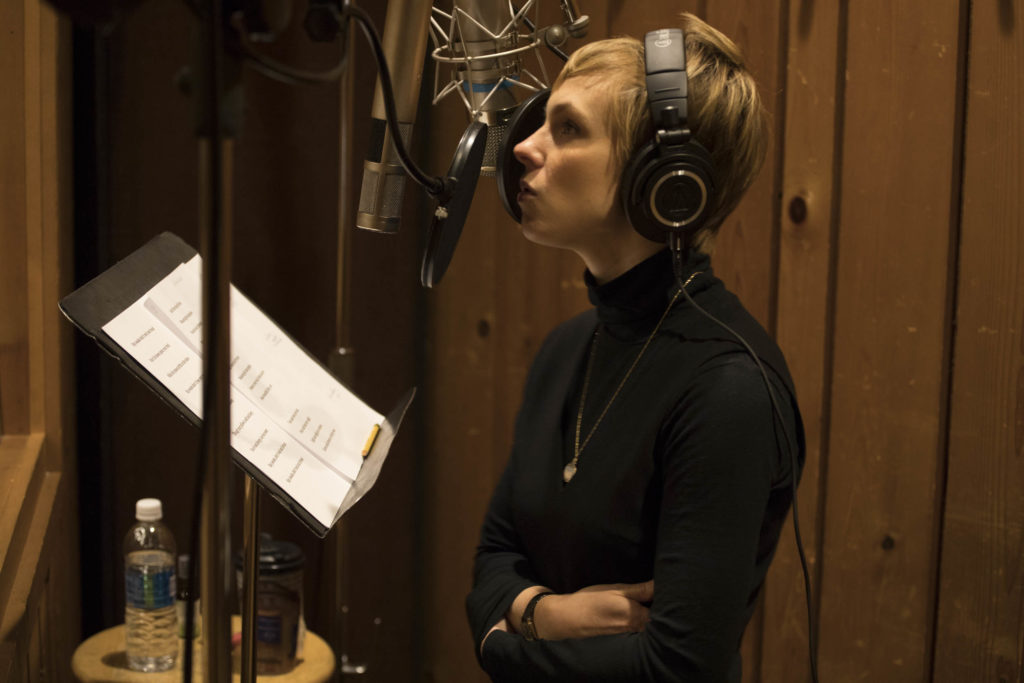
Life might seem nice and easy when you have a talent like Kat’s, but not all songs are easy to make, and the ideas force themselves upon her in a way that does not give her a chance to escape. The songs actually demand to be written. She has learned to recognise this feeling, and when it happens she might say to herself – here we go again! Sometimes, writing a song can be a way to process difficult things. In those cases, song writing is therapy to Kat – but not all therapy comes with pleasure alone.
Kat says that she often hears music in her head (a soundtrack of her life) and that she often thinks in terms of movies. I want to know where this inner imaging capacity comes from. Her answer is that she has a childish understanding of life. When she was as young as 3-4 years of age, she saw many old musical movies and expected that what she saw on the screen would be her future. She was thrilled, and her brain started to work in this way. She hears music, when washing, doing the dishes, driving the car etc. She does not have to analyse her feelings, they show through the music she is hearing in her head. The music proceeds her awareness of her mood.
Interpreting songs
When I found Kat back in 2014, her double talents struck me, being a great singer-songwriter and a great interpreter of songs composed by others. When I ask Kat how singing other people’s songs compares to singing her own, her answer somewhat surprises me. She seldom has problems interpreting other people’s songs, but sometimes can find it difficult to interpret her own. This happens when she is processing something and going through a change as a person. “I am my own greatest mystery”, she exclaims with a laugh.

In this context, one should mention her drama talents, visible to us when she sings at live performances and on videos. With the qualities of an experienced actor, she puts herself and her expression in the mood of the song’s subject. She radiates the anguish of unhappy love, or other painful feelings, when this is the theme of the song – like in Nobody Knows That from her second album Way Down Low. Of course, every singer tries to do this, but few have Kat’s capacity to be that genuine in the expression. However, it does not have to be unhappy feelings. Another example of her drama talents is the fun and somewhat spooky Someone’s in the House, on her latest album Dreamers Do.
Actually, Kat has had, and still has, ambitions to be an actor. When she watched many old musical movies on television as a young child, the combination of music and drama made her think that this was the natural combination. Dreaming about her future, this was the combination she was aiming for. Later she studied acting for two years at the William Esper Studio. She liked to be in front of the camera and felt she could have a career in acting, but eventually she followed the music thread instead.
Looking back
There have been moments of doubt in her career, but not in those early years. Otherwise, one might have thought that the comment from one of the jurors when Kat, aged 19, was turned down in the final of American Idol would have drained her of self-confidence. His verdict was that Kat “did not look like a star”. However, neither being turned down, nor the comment itself, damaged her self-confidence. After all, she made it to the final, but more importantly, she saw through the aim of the show. The narrow sensation-seeking concept of the TV show was more important than to find talent, and she saw many talented young artists that did not fit into that concept. Therefore, she went home with her self-confidence unaffected.
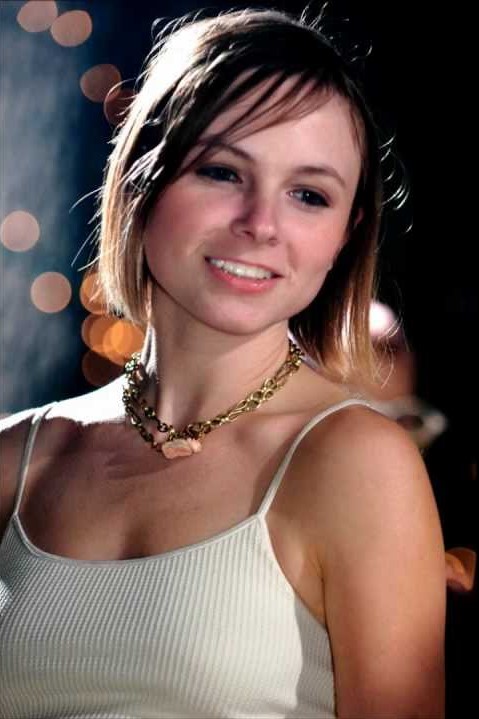
Kat grew up in Houston, Texas, but returning from American Idol and Hollywood, she chose to live in Austin. She took many jobs, but finally got a day job at a real estate agency and could sing in restaurants and bars at night. Sometimes it was exhausting and her boss once asked Kat if she really could manage this combination. He needed her to be more alert at the office. She then decided to put all her efforts into her music career. Her boss supported her choice, but was also worried about her. After all, at that moment she had only one booking coming up! The boss added one, and then she was on her way.
The word about Kat got around and the number of gigs at restaurants and bars increased. Fans came to listen and eventually she performed every day, sometimes twice a day. Kat learned how to create a show with a beginning and an end and how to fill up to four hours of performance. She learned how to entertain and how to speak to people. She also met many other artists. It was a period of a lot of hard work, but it was also a very educational time in her life.
Kat had heard that it is difficult to get into the business if you have not recorded an album before you are 25, so the year she would become 25, she made her first album on a label that she had created with a friend. Three years later, she made her second album on her own label. It caught the eyes of Sony Masterworks, which bought the rights to the album, offering her what a big record company can offer in terms of distribution, promotion etc. Now Kat was well on her way in her music career.
A philosophy of dreams
Kat’s doubts in herself came later, and she has an explanation as to why – her philosophy of dreams. Kat believes that having a dream has a deep existential importance. Having a dream actually means power. People can hinder you from realising that dream, but no one can stop you from having and believing in the dream. It is a protected area.
However, if you subordinate that dream to accomplish other things – money, fame, reputation, or even to make other people’s dreams come true – your dream is no longer a protected area. Your belief in the dream is diminished by the measurement of the other things you believe your dream should help you to accomplish. You start to concentrate your thoughts on how successful you have been in those terms, and the essential quality of your dream fades away.
This is what happened to Kat. Was she successful enough after the years she had spent in the music business? Were people around her satisfied enough with what she had accomplished? Was the record company satisfied enough?
The expectations, her own and others, eroded her self-confidence, and her doubts led to a crisis. Kat asked herself if she really did have “it”, and she felt shame for not having accomplished certain things. The power of the dream was disappearing, and she doubted that she really had a voice in the meaning of having something to say.
But then, a song demanded to be written. Eventually it became the song A Voice, later recorded on her fourth album, Old Fashioned Gal. However, when she wrote it, it was a very private song. In a comment to the YouTube video, Kat tells us that, when she wrote it she did not intend this song to be performed for anyone. The process that preceded the song was painful, and it was painful to write. However, somewhere along the way, she realised what had happened to her – she was subordinating her dream to other goals. She was able to restore the status of her dream, and now A Voice is on the album and on a YouTube video, maybe trying to convince us that everyone has a voice, worthy of being used and heard. Now, she understands that the power of a dream rests on the fact that it is a goal in itself, not a means to something else.

Kat returns to the same theme from another angle in the song Too Late to Dream on her latest album Dreamers Do. Are the messages we receive as children about following our dreams relevant through adult life – or do we become caged by our age? The question is open in the song, and I choose to interpret Kat’s philosophy in a positive way. The question needs to be asked, because the threats to our dreams are greater in adult life, but you can still overcome them. You need to overcome them.
In retrospect, Kat realises, that the way the record industry works today is not optimal in terms of finding and letting talents develop. According to Kat, the music industry is not for the faint-hearted. Like much of modern industry, it is based on short-term calculation of profit. Kat has now left Sony Masterworks, and the latest two albums are self-released.
Of course, Kat understands the need to make money, but it seems obvious to me that Kat does not make music only to make a living, so I close the interview by asking what being a musician and a songwriter mean to her. Does she think that she has a mission in making music? Her answer is honest and rests on a well-justified self-confidence.
I am called to do those things. I found that I write songs that touch people. If there is a purpose in life, this is mine, writing songs and singing them.
Music videos
This is a sample of music videos of songs from Kat’s five albums and her first single.
Be the Change (Single 2003)
Take to the Sky (2009)
Summertime / Just One of Those Things / Lovefool / (Just Like) Starting Over / Just Like Heaven
Way Down Low (2012)
Lucky / Champagne / What Else Can I Do / Nobody Knows That / Hopelessly Blue
The Big Picture (2014)
Oh My Love / All The Way / You Can’t Break My Heart / Till We Start To Kiss / Who’s Counting
Old Fashioned Gal (2018)
Sparkle and Shine / I’d Be a Fool / A Voice / Old Fashioned Gal / How’s About It Baby
Dreamers Do (2020)
When You Wish Upon a Star / Someone’s in the House / Very Good Advice / Too Late to Dream / All I Do is Dream of You / What a Wonderful World
Postlude
As I usually do, I conducted this interview with the support of my wife. We will both have our friendly conversation with Kat as a bright memory. There were many memorable moments. One is when Kat told us about the background to a favourite song of ours – Who’s Counting. Kat was about to leave Europe after a tour where she was the opening act to the British jazz pianist and vocalist Jamie Cullum. Standing in line at the airport, she felt lost in life and wondered where her place would be. The story Kat told us eventually turned into her reciting the song lyrics, and the beautiful words crossed the ocean between us. That was “no ordinary thing”. Thank you Kat!
Searching for something to which I can relate
Standing in a long line at the third departure gate
You’re first or you’re last it’s still hurry up and wait
Crossing the ocean ain’t no ordinary thing
Five thousand miles on a gigantic missile with wings
One minute to take off and the captain bell dings
I’ve got three three decades as Sue and Jim’s daughter
And it’s been four years four years I’ve been singing in the halls
We’ve shared two two anniversaries together
But who’s counting babe who’s counting the tallies on the wall
Who’s counting baby who’s counting anything at all
We try to be right we try to be good we try to be strong
It’s never enough it’s always too much and there’s still something wrong
And yet in the meantime we just keep moving along…
